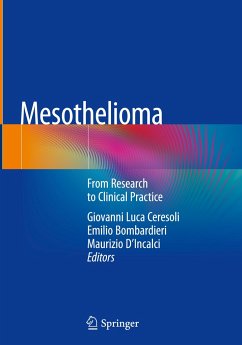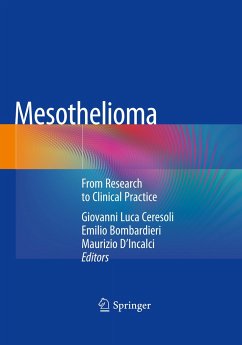
Cancer Metastasis Through the Lymphovascular System
Versandkostenfrei!
Versandfertig in 6-10 Tagen
87,99 €
inkl. MwSt.

PAYBACK Punkte
44 °P sammeln!
This textbook describes in detail the process of cancer metastasis from a single cell in the primary site through its arduous journey to the sentinel lymph node as the main gateway and beyond to distant sites. The most up-to-date knowledge on key topics in the molecular biology, diagnosis, and treatment of metastatic cancer is highlighted by a large panel of experts.The book begins with a comprehensive overview of the genetic and molecular mechanisms that promote or inhibit cancer metastasis through lymphatic pathways to lymph nodes or through vascular pathways to distant sites, providing the ...
This textbook describes in detail the process of cancer metastasis from a single cell in the primary site through its arduous journey to the sentinel lymph node as the main gateway and beyond to distant sites. The most up-to-date knowledge on key topics in the molecular biology, diagnosis, and treatment of metastatic cancer is highlighted by a large panel of experts.
The book begins with a comprehensive overview of the genetic and molecular mechanisms that promote or inhibit cancer metastasis through lymphatic pathways to lymph nodes or through vascular pathways to distant sites, providing the reader with an essential basic knowledge. This is followed by further details on the role of the immune system within the primary tumor and the lymph node and the importance of the microenvironment at the metastatic site. The role of the sentinel lymph node in cancer metastasis is emphasized. Special attention is also given to state-of-the-art imaging techniques for the detection of early-stage cancer and cancer metastases, as well as the use of liquid biopsies in sarcoma, prostate, gastrointestinal, and lung cancer. Clinical patterns of malignant tumors arising in different organ systems are compared, described, and discussed with the goal of determining what similarities and/or differences exist. The book concludes with a detailed discussion of surgical intervention, radiation, and systemic therapy of primary and metastatic cancer, and briefly previews several emerging topics, such as the latest findings on personalized cancer therapy, cancer stem cells, unique molecular mechanisms of virus-induced cancer, the impact of the microbiome on cancer metastasis and the application of artificial intelligence in cancer metastasis research.
By providing fundamental knowledge of the biological and clinical aspects of cancer metastasis, this book will be an important reference for cancer researchers, clinical oncologists, teachers, and students. Written by experts in the field, each chapter includes a summary of the chapter's key points and open-ended questions that address pressing issues in the field and encourage the reader to consider future directions.
The book begins with a comprehensive overview of the genetic and molecular mechanisms that promote or inhibit cancer metastasis through lymphatic pathways to lymph nodes or through vascular pathways to distant sites, providing the reader with an essential basic knowledge. This is followed by further details on the role of the immune system within the primary tumor and the lymph node and the importance of the microenvironment at the metastatic site. The role of the sentinel lymph node in cancer metastasis is emphasized. Special attention is also given to state-of-the-art imaging techniques for the detection of early-stage cancer and cancer metastases, as well as the use of liquid biopsies in sarcoma, prostate, gastrointestinal, and lung cancer. Clinical patterns of malignant tumors arising in different organ systems are compared, described, and discussed with the goal of determining what similarities and/or differences exist. The book concludes with a detailed discussion of surgical intervention, radiation, and systemic therapy of primary and metastatic cancer, and briefly previews several emerging topics, such as the latest findings on personalized cancer therapy, cancer stem cells, unique molecular mechanisms of virus-induced cancer, the impact of the microbiome on cancer metastasis and the application of artificial intelligence in cancer metastasis research.
By providing fundamental knowledge of the biological and clinical aspects of cancer metastasis, this book will be an important reference for cancer researchers, clinical oncologists, teachers, and students. Written by experts in the field, each chapter includes a summary of the chapter's key points and open-ended questions that address pressing issues in the field and encourage the reader to consider future directions.














